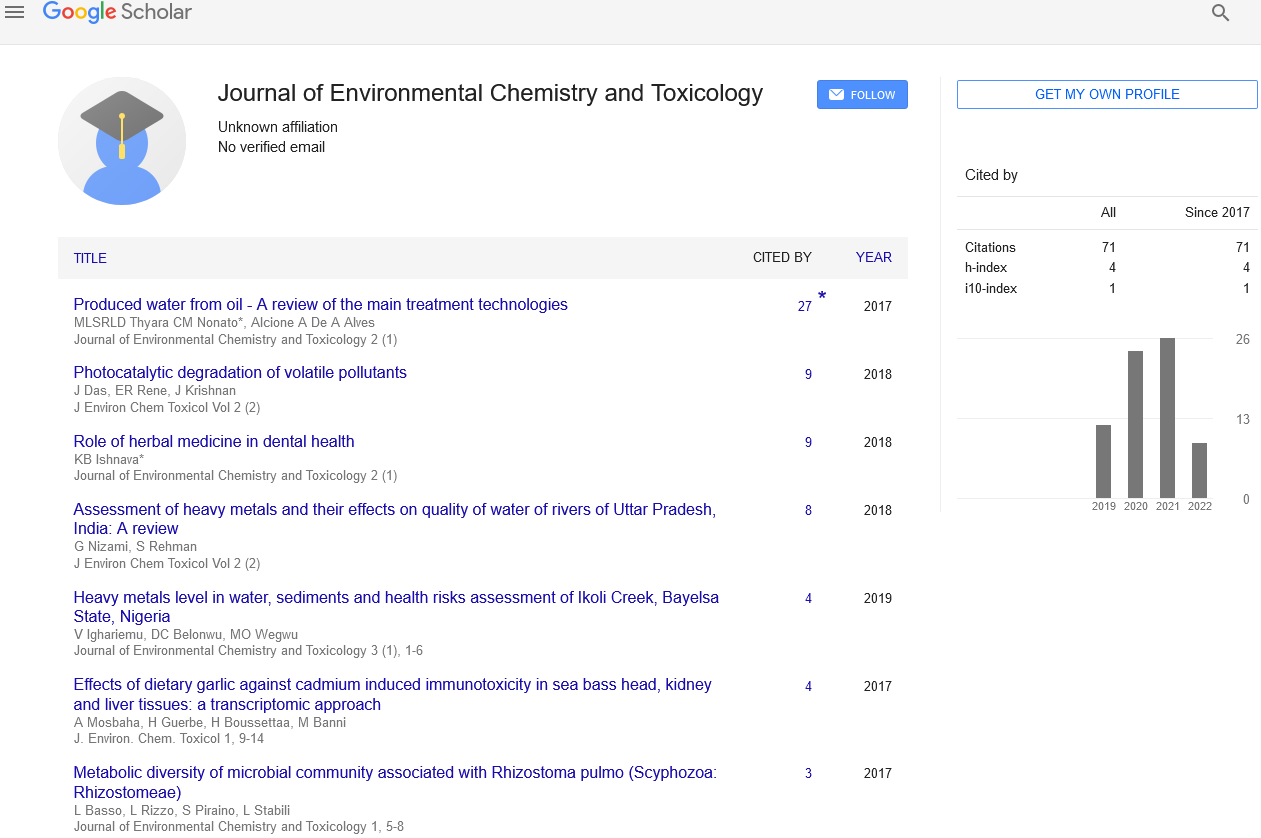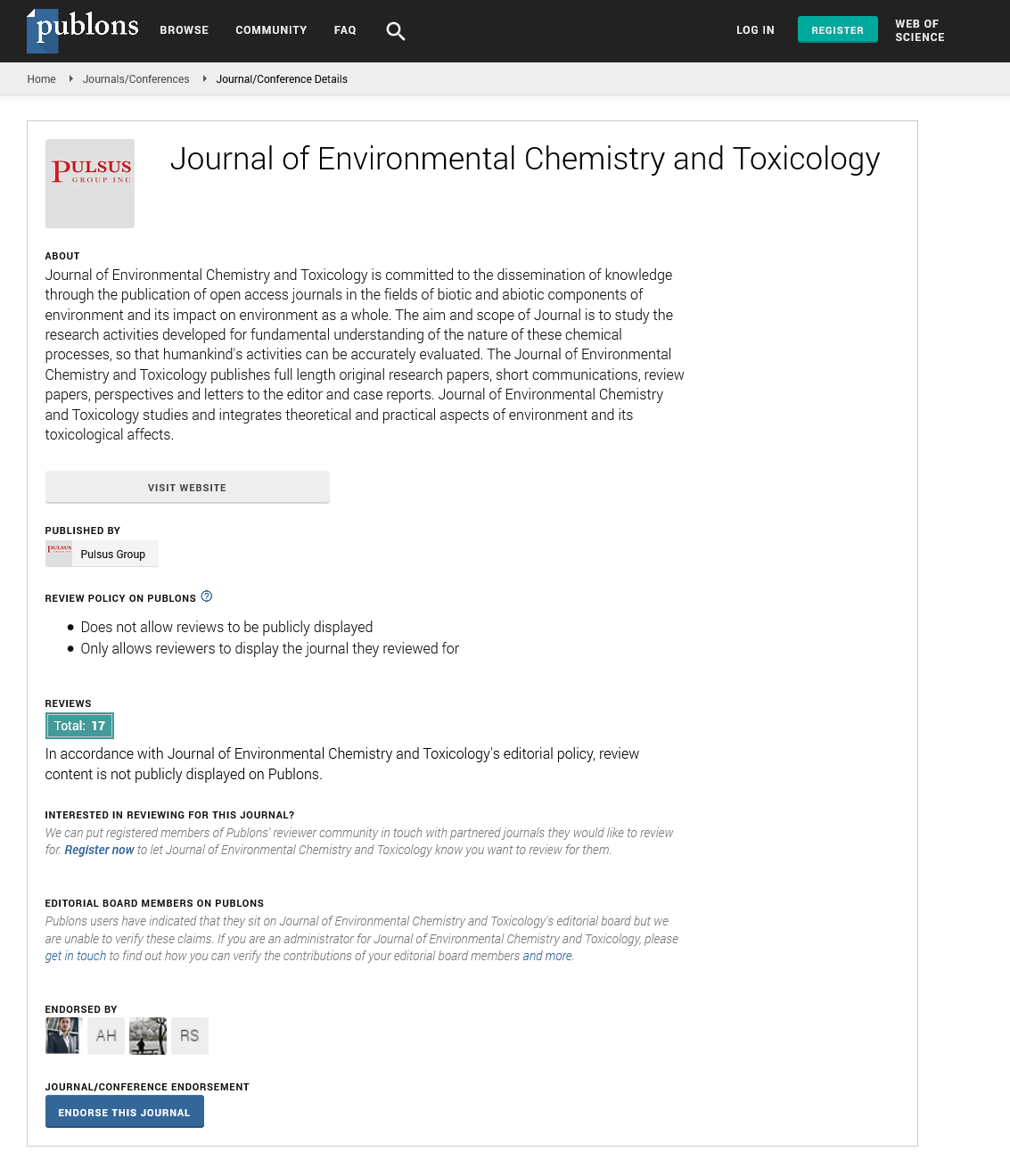Catalytic Remediation in Environment
Received: 14-Jul-2021 Accepted Date: Jul 23, 2021; Published: 28-Jul-2021
Citation: Steve B. Catalytic Remediation in Environment. J Environ Chem Toxicol 2021;5(4):1-1
This open-access article is distributed under the terms of the Creative Commons Attribution Non-Commercial License (CC BY-NC) (http://creativecommons.org/licenses/by-nc/4.0/), which permits reuse, distribution and reproduction of the article, provided that the original work is properly cited and the reuse is restricted to noncommercial purposes. For commercial reuse, contact reprints@pulsus.com
Editorial
Catalysis was mainly introduced in the evolution of industrial technology in the 1960s, focusing mostly on refinery and petrochemical processes. Catalysis has been recognized as a multidisciplinary science over the past two decades, not only in the scientific community of chemist and chemical engineers but now involves synergistic interacting between many other scientists, e.g. materials, electronic engineers, mechanical engineers, physicists, biologists, doctoral scientists and others. Catalysis has been (and continues to be) used in the vast majority of chemical transformations, including the production of commodity chemicals and added-value products from raw materials and mineral resources, green chemistry, fine chemicals and pharmaceuticals production, hydrocarbons processing, wastewater treatment and water cleaning, gas pollutant emissions control, photo-electrochemistry, and fuel combustion. As a result of the accompanying major developments in industrial, agricultural, energy technology, and health during the last few years, catalysis has made a significant contribution to human well-being.
The use of solar energy to address developing environmental challenges and the energy crisis has piqued the interest of numerous researchers. Several photocatalytic environmental and energy applications, such as wastewater treatment, air purification, water splitting, and CO2 reduction, have been developed. Extensive investigations have been conducted during the rapid growth of photocatalysis technology over the last half-century, which has enhanced our understanding of photocatalytic materials, light absorption capacity and carrier separation, and transfer qualities. A structure-activity connection has been widely described in the present literature; however, aside from novel photocatalyst design and modification, the investigation of mechanism-activity correlation remains a significant problem.
Massive amounts of municipal sludge waste have been produced in recent decades as a result of growing urbanisation and industrialization. Sludge waste, on the other hand, generally contains high quantities of nitrogen, phosphate, heavy metals, organic micropollutants, and pathogens, providing significant environmental risks after disposal. As a result, in recent years, the treatment and reutilization of sludge waste has become a research hotspot. To meet policy expectations, a low-cost and environmentally friendly procedure must be developed. Some universal sludge treatment methods, such as incineration and landfilling, have resulted in unfavourable secondary contamination in underdeveloped nations. Thermal treatment, on the other hand, provides an affordable and environmentally responsible solution to sludge recycling by turning sludge wastes into functional biochar and valuable biofuel. Biochar is a porous carbon-rich substance that has aromatic hydrocarbon surfaces and oxygen-containing groups. Sludge sources (primary, secondary, anaerobic digestion, and dewatering process) and thermochemical techniques essentially determine the physicochemical features of sludge biochar (conventional, dry and wet pyrolysis processes). These approaches can limit heavy metal, organic pollutant, and pathogen leaching from sludge products into soil and water.
Rapid industrialization and technological advancements have resulted in several environmental repercussions such as climate change, water scarcity, and hazardous air and water pollution, resulting in major environmental concerns in the twenty-first century. The development of technologies with unique features such as reduction and degradation processes is undeniably a modern approach to resolving and reducing the aforementioned environmental and human life challenges. Among several treatment options, the chemical reduction process is one of the most widely recognised approaches for waste water treatment and is a key chemical reaction in industrial chemistry and organic synthesis. The treatment of harmful heavy metals, synthetic organic dyes, and nitro compounds as poisonous/hazardous substances in waste waters via a chemical reduction technique is an effective strategy for environmental pollution remediation.






